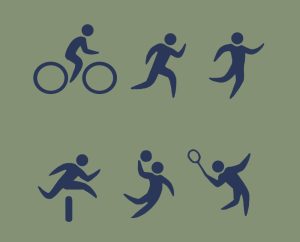The role exercise plays in cancer care is becoming increasingly important. Exercise is known to be safe and helpful for cancer survivors during and after treatment, and oncologists and their teams continue to recommend it for their patients. Oncology rehabilitation programs are growing and are now considered to be part of standard cancer care.
Recent research studies point to many specific benefits of exercise. Some show it significantly improves cancer-related fatigue compared to medications and that it can help improve survival for some advanced cancers, including metastatic colorectal cancer. Research also shows the long-term benefits of increased exercise and a healthy lifestyle after cancer to reduce other diseases, as well as the benefits of higher intensity exercise.
These tips can help make it easier to create—and stick to—a personalized exercise routine that’s right for your life. Remember to talk to your doctor before starting an exercise routine, so you can develop a plan that works best for you.

#1. Learn about the physical activity recommendations.
For adults, the U.S. Centers for Disease Control and Prevention recommends 150 minutes of moderate-intensity aerobic activity or 75 minutes of vigorous-intensity aerobic activity per week. The guidelines also recommend 2 days of full-body strength training.
- 150 minutes breaks down to 22 minutes per day, 7 days per week. Or you can do 30 minutes of exercise 5 times per week. Moderate-intensity exercise should leave you breathing heavily but able to carry on a conversation in short sentences.
- 75 minutes breaks down to 15 minutes per day, 5 days per week. Vigorous-intensity exercise is when you can answer a question during exercise, but only in a word or two.
- Full-body strength training, also called resistance training, is resistance-based exercise that creates muscle overload to stimulate new muscle to grow. You can do it with small weights, resistance bands, exercise machines, or the weight of your own body, such as with pushups. Other forms of resistance training, such as water exercises or certain types of yoga, can be helpful if you have joint pain.
#2. Use a variety of exercises.
There are different types of exercise. An effective exercise plan will include a variety of types of exercise to have the best benefit for the whole body.
- Aerobic training. Activities like walking and running are great aerobic exercise. But activities of daily living (ADLs), such as laundry, bathing, dressing, or cooking, may be your starting point. When you’re too tired to complete ADLs, adding extra aerobic exercise can make you more fatigued because the same muscles are being used.
- Resistance training. Although resistance training is one of the most important types of exercises during and after cancer treatment, it’s not done enough. Movements such as standing up from a chair or toilet, climbing stairs, and carrying grocery bags all require muscle. Resistance exercise, which can help reduce fatigue and improve body function, will make these tasks easier. It’s also important to building bone density.Tip: A common start to resistance training is to complete 5 to 10 sit-to-stands from a chair several times per day. Another way is to grab 1-pound soup cans or hand weights and complete 10 repetitions of arm curls and shoulder presses each day.
- Core training. Core training is the basis of movement. The muscles around the middle of your body, from just under the ribs to a few inches below where your hip bends, are your core. These muscles are used in every single movement your body makes, even rolling over in bed.Tip: To strengthen your core, sit in a hard-backed chair with your chest tall and shoulder blades pulled back. Then, try to tighten your abdominal muscles and sit in this position for as long as possible. Be careful not to hold your breath. Start with 2 to 3 minutes. Work up to maintaining this posture when you drive a car or walk across the room.

#3. Train for your life by using functional fitness.
Think about the movements that you need to accomplish in your life and train for them. For example, if you need to bring laundry from one level of your home to the next, start by moving an empty laundry basket or small pile of towels multiple times to activate the needed muscles. If you find it difficult to carry groceries, train with a sack that has just a few small canned goods. Set the sack onto the floor, then pick it up and onto your kitchen counter. Try this type of exercise planning for any movement that makes sense for your life.

#4. Remember to refuel your tank.
Hydration and food, especially protein, is key to recovery after exercise and resistance training. Exercise also has a powerful role in improving the quality of sleep, which also aids recovery. If your body cannot recover properly from new physical exertion, it can be harder to stick with your exercise program.
>> Best diets during cancer treatment

#5. Find an accountability partner.
Another way to make your exercise program consistent is to tell someone close to you what your exercise plan is. Then, empower that person to encourage you by asking you about it regularly, or even join you. Share your goals and ask them what theirs are.


